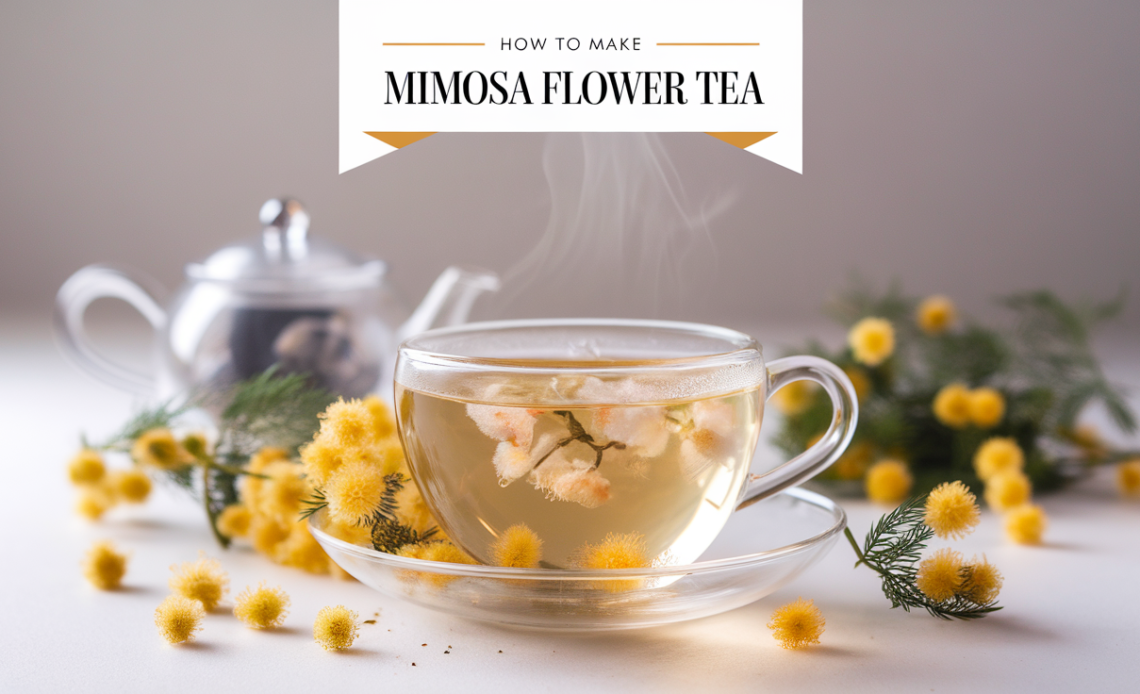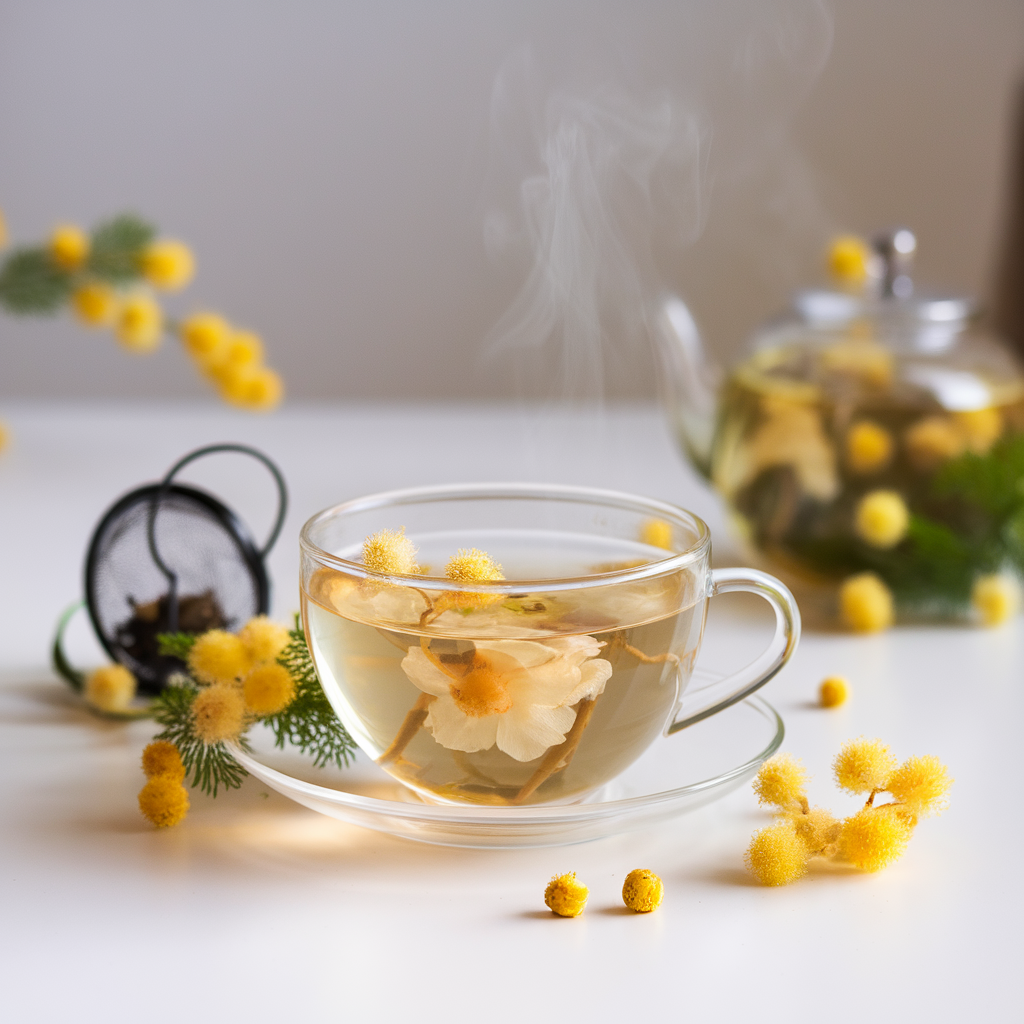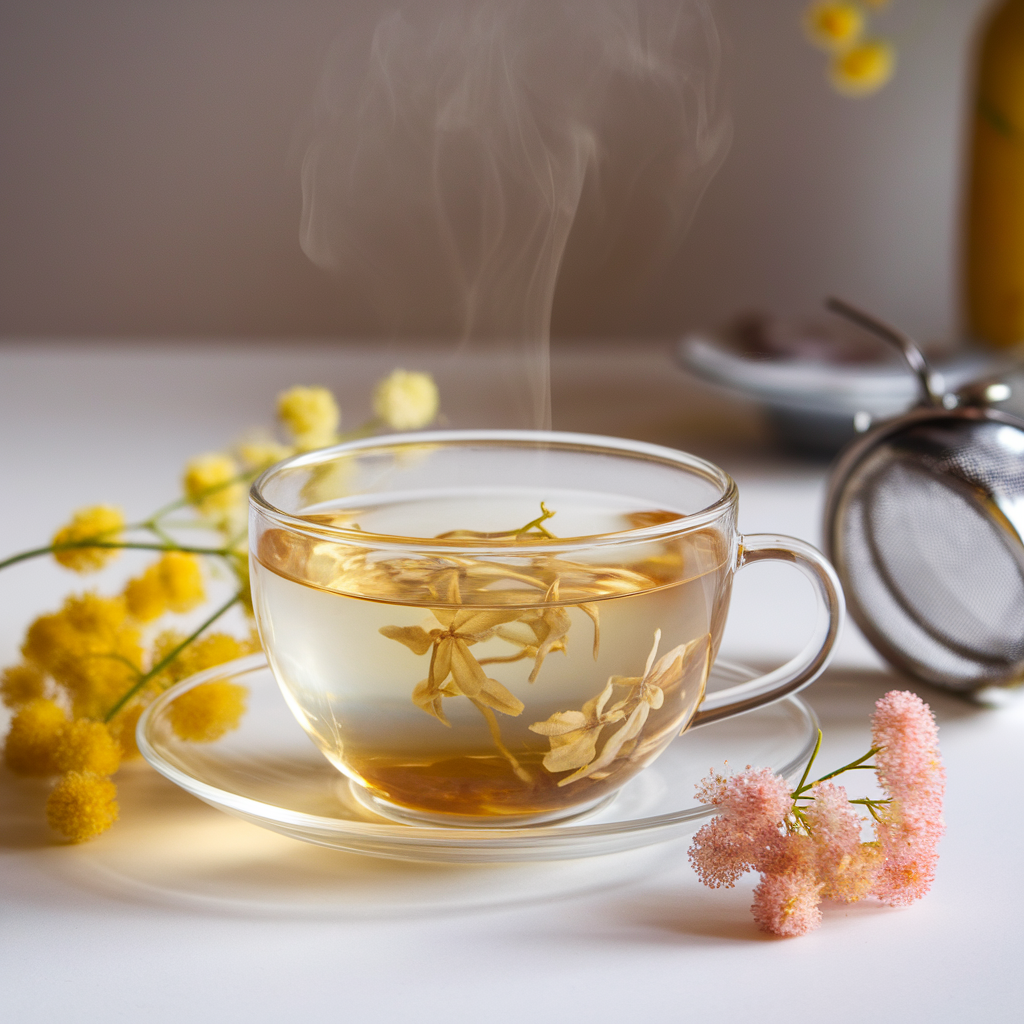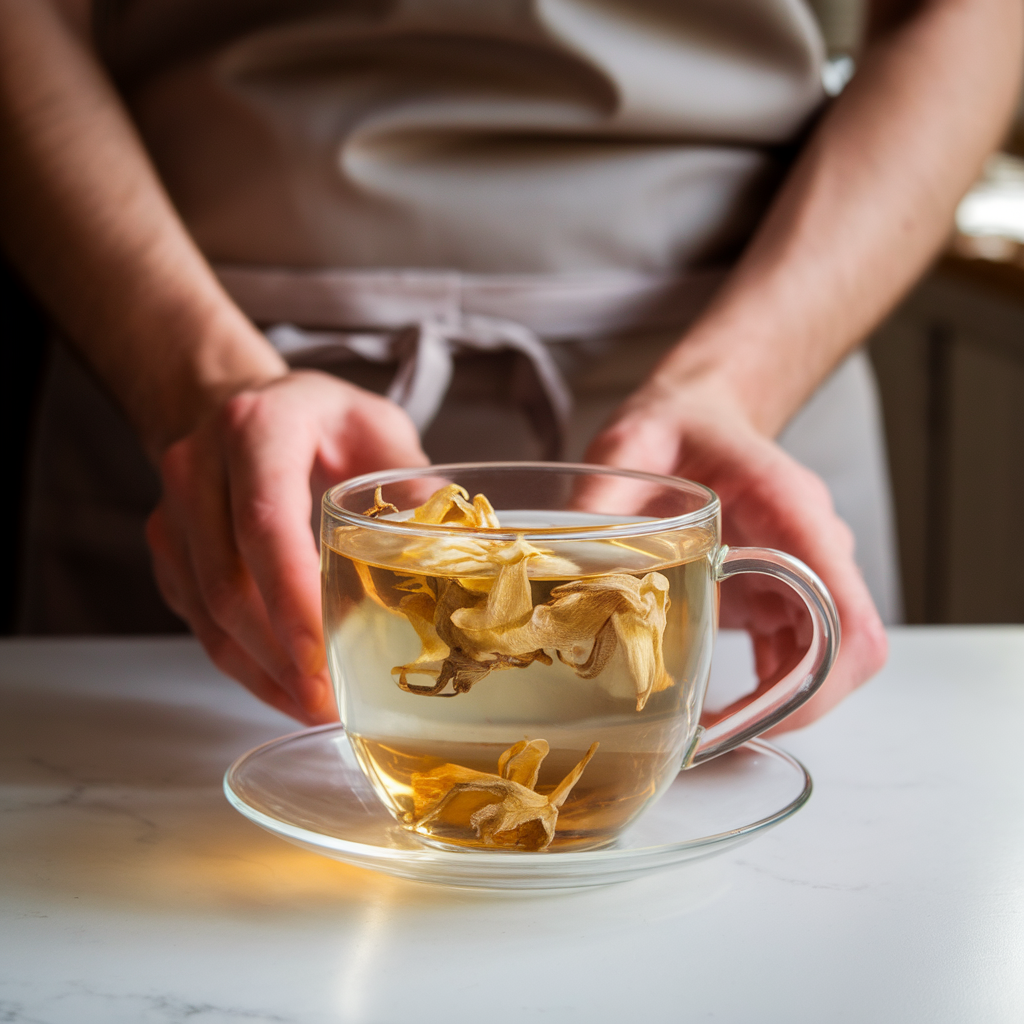
Mimosa flower tea, made from the delicate blooms of the mimosa plant, is an aromatic and soothing drink cherished in many cultures for its health benefits and calming properties. This tea is not only known for its lovely floral aroma and vibrant colors but also for its rich medicinal benefits. It is widely regarded as an excellent herbal remedy that helps to calm the mind, improve sleep, and support digestive health. In this article, we will explore the process of making mimosa flower tea, the benefits of the mimosa plant, and how it can be used in different herbal preparations.
The Mimosa Plant: An Introduction
The mimosa plant, scientifically known as Mimosa pudica or Mimosa hostilis, is a tropical and subtropical plant native to parts of Africa, Asia, and Central and South America. It is often recognized by its beautiful, pink or purple, fluffy blossoms that appear in clusters during the warmer months. These blossoms not only serve as an ornamental plant in many gardens but are also prized for their medicinal properties.
Mimosa plants are part of the legume family, and their blossoms have been used for centuries in traditional herbal medicine. While most people are familiar with the idea of mimosas as a drink served at brunch (typically made from champagne and orange juice), mimosa flower tea is a completely different creation and has its own distinct charm.
Mimosa Tincture Recipe: A Potent Herbal Extract
Before we dive into the process of making mimosa flower tea, it’s important to understand that mimosa blossoms can also be used to make tinctures. A mimosa tincture is a concentrated liquid extract that is often used for therapeutic purposes.
Ingredients:
- 1 part dried mimosa flowers
- 5 parts alcohol (vodka, rum, or brandy)
- A mason jar or glass container
Instructions:
- Preparation: Begin by harvesting or purchasing dried mimosa flowers. You can find them at health food stores or online.
- Tincture Creation: Place the dried mimosa flowers into the mason jar, filling it about halfway. Pour the alcohol over the flowers, ensuring they are fully submerged.
- Infusion Process: Seal the jar tightly and store it in a cool, dark place for about 2–4 weeks. Shake the jar daily to help the flowers release their beneficial compounds.
- Straining: After 2–4 weeks, strain the tincture using a fine mesh strainer or cheesecloth to remove the plant material.
- Storage: Transfer the strained tincture to a dark glass dropper bottle for easy use. The tincture can be taken in small doses to relieve anxiety, promote relaxation, or support digestive health.
This mimosa tincture recipe is an easy way to enjoy the medicinal properties of the mimosa plant in a concentrated form. You can use it for stress relief, to help with sleep, or even in small amounts as part of a larger herbal regimen.

How to Make Mimosas (Flower Tea)
Now that we’ve covered the mimosa tincture recipe, let’s focus on how to make mimosa flower tea. This delightful herbal beverage is simple to prepare and offers a wide range of health benefits. Making mimosa flower tea is easy and requires just a few basic ingredients.
Ingredients:
- 1-2 teaspoons dried mimosa flowers (or fresh if available)
- 1 cup hot water
- Honey or sweetener (optional)
Instructions:
- Boil Water: Start by boiling water. If you’re using fresh mimosa flowers, be sure to rinse them lightly before use.
- Prepare the Tea: Place the dried or fresh mimosa flowers in a tea infuser or directly in the cup.
- Pour Water: Pour the hot water over the flowers, ensuring they are completely submerged. Allow the flowers to steep for about 5–10 minutes, depending on how strong you like your tea.
- Strain and Sweeten: If you used loose flowers, strain the tea before drinking. You can sweeten the tea with honey or another sweetener if desired, though many prefer it plain to enjoy its natural flavor.
- Serve and Enjoy: Your mimosa flower tea is now ready to be enjoyed! Serve it hot or iced, depending on your preference.
Tips:
- If you prefer a stronger taste, you can increase the amount of dried flowers or steep the tea for a longer period.
- Mimosa flower tea pairs well with a variety of other herbs, such as lavender, chamomile, or lemon balm, for added flavor and benefits.
Health Benefits of Mimosa Tea
Mimosa tea is not just a flavorful drink; it’s also packed with health benefits. Below are some of the key reasons to incorporate mimosa flower tea into your wellness routine.
1. Promotes Relaxation and Reduces Stress
Mimosa flower tea has a calming effect on the body and mind, making it an excellent choice for stress relief. The active compounds in mimosa blossoms help to relax the nervous system, promoting a sense of calm and tranquility. It’s often recommended for people dealing with anxiety or insomnia, as it can help ease both physical and mental tension.

2. Improves Sleep Quality
The calming properties of mimosa flowers extend to improving sleep. Consuming a cup of mimosa flower tea before bed can help improve the quality of your sleep, making it easier to fall asleep and stay asleep throughout the night. This makes it a great natural remedy for people who suffer from insomnia or disturbed sleep patterns.
3. Supports Digestion
Mimosa flowers have been traditionally used to aid in digestion. They have mild antispasmodic properties, which can help reduce bloating, gas, and discomfort in the digestive tract. Drinking mimosa tea after meals may promote better digestion and reduce stomach upset.
4. Boosts Mood
The soothing and uplifting effects of mimosa flower tea can also support mood enhancement. Drinking this tea regularly may help alleviate feelings of depression or irritability, promoting a more balanced and positive mood.
5. Anti-inflammatory Properties
Mimosa flowers contain natural anti-inflammatory compounds that may help reduce inflammation in the body. This makes mimosa tea a great option for individuals dealing with chronic pain or inflammatory conditions.
6. Rich in Antioxidants
Like many herbal teas, mimosa flower tea is rich in antioxidants, which help to combat oxidative stress and protect the body from free radical damage. This can support overall health and may contribute to the prevention of chronic diseases.
Mimosa Blossom: A Delicate Floral Addition to Your Herbal Collection
Mimosa blossoms are not only beautiful but also highly beneficial when incorporated into herbal tea recipes. These delicate pink and purple flowers have long been used in traditional medicine for their calming and soothing effects. In addition to being an ingredient in mimosa tea, the blossoms can also be used in other herbal preparations, such as tinctures and infusions.
If you’re hosting a botanical garden party or simply want to enjoy a fragrant and relaxing experience, mimosa flowers can be a lovely addition to your collection of herbal remedies. Incorporating mimosa blossoms into various herbal preparations allows you to enjoy their therapeutic benefits in a variety of forms.

Herbal Tea Recipes Homemade: More Ways to Use Mimosa
In addition to the classic mimosa flower tea, there are other creative ways to incorporate mimosa blossoms into homemade herbal tea recipes.
1. Mimosa and Lavender Tea
This calming tea blends the floral notes of mimosa with the soothing aroma of lavender. The combination is perfect for promoting relaxation and helping with sleep.
2. Mimosa and Chamomile Tea
Mimosa and chamomile are both renowned for their calming effects. This tea is a great option for reducing stress and promoting a peaceful night’s sleep.
3. Mimosa and Lemon Balm Tea
Lemon balm is known for its uplifting properties, while mimosa helps to soothe the body and mind. Together, they create a balanced tea that promotes relaxation while boosting mood.
Conclusion
Mimosa flower tea is a delightful and aromatic herbal beverage with a wealth of health benefits. Whether you’re looking to relax, improve your sleep, or support digestion, mimosa tea is a great option to include in your wellness routine. By making your own mimosa tea or preparing a mimosa tincture, you can easily enjoy the therapeutic properties of this beautiful plant.
The mimosa plant, with its delicate blossoms, is more than just an ornamental addition to your garden—it’s a powerful herbal remedy that can be enjoyed in a variety of preparations. So why not gather some mimosa blossoms and start brewing your own batch of mimosa tea today? Whether it’s for a botanical garden party, a relaxing evening, or just as part of your self-care routine, mimosa tea is sure to bring a sense of peace and tranquility to your day.




